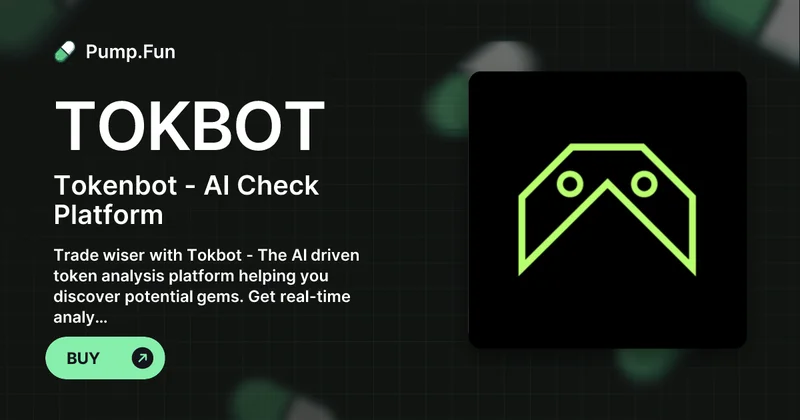Real-Time BNB Signal Analytics
Real-Time BNB Signal Analytics
I’ve seen a lot of noise this past week about a token called CLANKER. The headlines are all screaming about a 70%, then 90% price jump, a “golden cross” on the charts, and a coveted spot on Coinbase’s roadmap. And yes, for traders, headlines like CLANKER Token Gains 90% After Coinbase Announcement are the whole story. But if you think this is just another blip on the crypto market radar, you are missing the earthquake for the tremor.
What’s happening with Clanker isn’t about a price chart. It’s a signal—a bright, flashing neon sign—that the very nature of creation on the internet is undergoing a fundamental paradigm shift. We are witnessing the friction between an idea and its economic expression being sanded down to almost nothing. This is the kind of breakthrough that reminds me why I got into this field in the first place. It’s raw, it’s a little chaotic, and it’s absolutely beautiful.
For years, the promise of blockchain was about decentralization, but it always came with a catch: a steep technical barrier. You needed to be a developer, or hire one, to bring an idea to life. Clanker, a bot built on the Base blockchain by Farcaster engineer Jack Dishman, effectively demolishes that wall. It allows anyone with an idea and about one Ether to launch a fully functional ERC-20 token.
Let’s use a clarifying self-correction here. When I say "launch an ERC-20 token," it sounds complex. In simpler terms, it means you can create your own digital currency, a community reward point, a fan token, or a micro-economy for your project with a few clicks in a simple interface. No coding, no command lines, no summoning a blockchain wizard. You just give it a name, a ticker, and a starting market cap.
This is the printing press moment for digital value. Before Gutenberg, creating a book required a scribe, immense resources, and time. It was the exclusive domain of the church and the state. The printing press didn't just make more books; it unleashed a torrent of new ideas, pamphlets, and manifestos that reshaped society itself. What we're seeing now is a parallel. The ability to mint a unique, tradable digital asset is being handed to everyone.

The immediate, and frankly cynical, reaction is predictable: “Great, so now everyone can launch their own worthless meme coin.” And yes, in the short term, that’s exactly what will happen. The first expressions of any new creative freedom are always chaotic, playful, and often absurd. But to dismiss the entire invention because of its initial use is like dismissing the internet in 1995 because it was mostly for goofy chat rooms and blinking GIFs.
You have to look deeper. Look at what’s already happening. Over 200,000 unique tokens have been created on the platform, driving a staggering $2.7 billion in trading volume. When I first saw these numbers, I honestly just sat back in my chair, speechless. This isn’t a niche toy for crypto insiders; it's a tool that's already operating at a massive scale. It’s proving that there is a colossal, pent-up demand for this kind of frictionless creation.
We’re already seeing the green shoots of what’s possible. Dan Finlay, the co-founder of MetaMask, used Clanker to launch a token called CONSENT, built around the idea of user autonomy. It’s an experiment, a conversation starter minted into an economic form. This is where the magic lies. What happens when an artist can fund their next mural by issuing tokens to their earliest supporters? What if a scientific research group could reward data contributors with a token that represents a stake in their future discoveries? This isn't just about finance it's about community organization and crowdfunding and loyalty programs and social experiments all rolled into one frictionless package that lets you test an idea in minutes instead of months.
Of course, with this new power comes a profound responsibility. When the cost of creation plummets, the value of curation and trust skyrockets. We will need new tools for discovery and new social mechanisms to separate the signal from the noise. How do we navigate a world with millions of new micro-economies, each with its own rules and communities? That’s the next great challenge, and it’s an exciting one to tackle.
Look, the price of CLANKER will go up and it will go down. The market will do what it does. But fixating on that is like staring at a single brushstroke while ignoring the masterpiece being painted. The real story here is the birth of a new creative primitive for the internet. For the first time, the ability to create a bespoke economic instrument is not the exclusive domain of developers and venture capitalists. It belongs to everyone.
We are moving from a world where you had to ask for permission to build, to one where you just… build. You have an idea for a community, a project, a movement? You can now give it an economic engine in the time it takes to order a coffee. This is more than just a new piece of technology. It’s a catalyst for human ingenuity, and we are only just beginning to imagine what we’ll do with it.